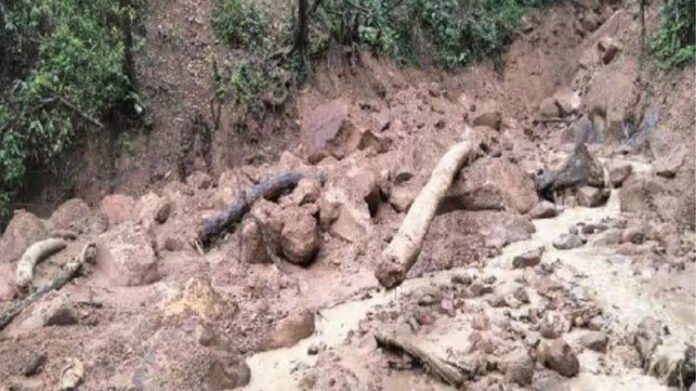A looming environmental crisis is unfolding along the National Highway 40 (NH-40) in Meghalaya, as government officials and geologists warn of increasing landslide risks in the ongoing road construction zone. Stretching between Shillong and Dawki, this vital corridor is currently being upgraded to improve connectivity and trade links between India and Bangladesh. However, the region’s fragile ecosystem, combined with unregulated earth-cutting and heavy monsoon activity, has turned the development site into a potential disaster zone.
The NH-40 expansion, part of the Centre’s larger infrastructure push in the Northeast, has been a matter of both promise and peril. While the upgraded highway is expected to significantly boost economic opportunities and improve regional mobility, experts now caution that the methods employed in its construction are triggering geological instability across large portions of the East Khasi Hills.
Warning Signs and Mounting Concerns
In recent weeks, teams from the State Disaster Management Authority (SDMA) and Geological Survey of India (GSI) have observed multiple signs of slope failure, soil loosening, and unnatural fissures in areas near Pynursla, Mawlynnong, and parts of the Dawki stretch. Officials have flagged the aggressive cutting of hill slopes without proper slope stabilization and drainage systems as the primary causes of concern.
“The unscientific way in which the hills are being cut is alarming. In many places, vertical cuts are being made with no retaining walls or vegetation to hold the soil. With the monsoon season approaching, these exposed slopes could easily collapse,” said an official from the SDMA.
These fears are not unfounded. Meghalaya has a history of deadly landslides, especially in the monsoon months between June and September. The steep gradients of the East Khasi Hills, coupled with heavy rainfall, create perfect conditions for slope failures when natural landscapes are disturbed.
Local Communities at Risk
Adding to the urgency of the situation is the potential danger faced by local communities living in proximity to the highway. Villages located along the NH-40 construction stretch, including Riwai and Pomlum, have already reported minor landslips and deepening cracks in nearby fields and structures. Residents are increasingly fearful about what the coming rains may bring.
“We are afraid for our homes and our lives. Since the construction started, we have seen mudslides and waterlogging like never before,” said a resident of Pynursla, pointing to a fresh crack that had formed just meters from her house.
Local community leaders and environmental activists are now calling for immediate intervention by both state and central authorities. They are demanding better monitoring, scientific assessments of landslide-prone areas, and implementation of safeguards like terracing, netting, and proper water run-off systems.
Response from Authorities
Acknowledging the issue, officials from the Public Works Department (PWD) and the National Highways & Infrastructure Development Corporation Limited (NHIDCL), which is overseeing the construction, have assured that steps are being taken to mitigate landslide threats. A spokesperson for the NHIDCL stated that revised engineering designs have been submitted and contractors are being instructed to incorporate stabilizing measures wherever feasible.
“We are coordinating closely with geologists and disaster management teams. Some stretches are being reassessed to include slope reinforcement techniques such as gabion walls, shotcrete spraying, and proper drainage,” the official confirmed.
However, critics argue that these measures are too little, too late. They point out that such interventions should have been included in the planning stage itself and that the lack of environmental sensitivity may cost both lives and public funds in the long run.
Balancing Development and Safety
The NH-40 project represents a classic case of development versus ecological sustainability. While infrastructure growth is essential for economic progress in the Northeast, especially to facilitate international trade with Bangladesh, experts urge that such projects must be executed with a deep understanding of local geology and ecology.
The hills of Meghalaya are not just terrain to be bulldozed—they are ecologically rich and geologically delicate zones that demand careful handling. As monsoon clouds gather over the region, the government faces a critical test: whether it can balance its development ambitions with the safety and sustainability of its people and land.
For now, all eyes are on the weather—and on whether the warning signs of today become the disasters of tomorrow.

